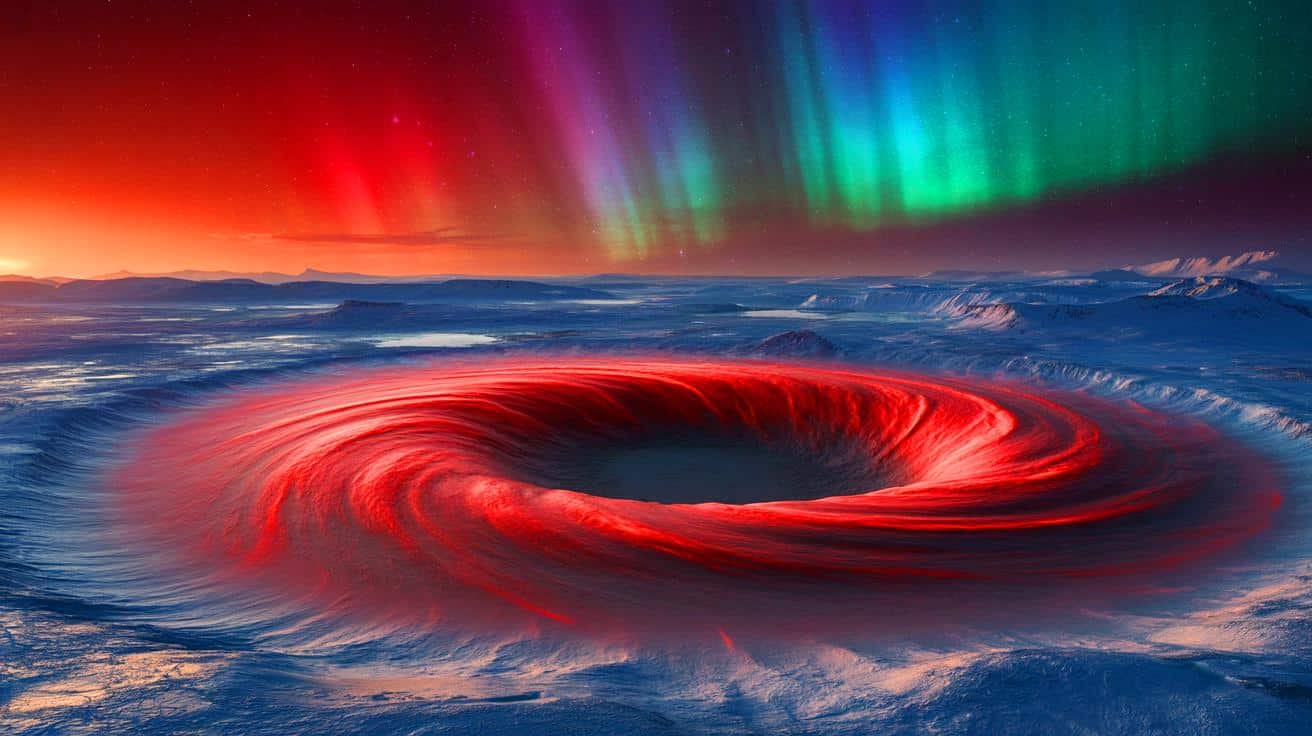Scientists Discover Shocking Ozone Surge on Mars That Could Rewrite History!
2025-10-07T09:56:32Z

What if I told you Mars, our mysterious neighbor, may have harbored life thanks to a hidden surge in ozone levels? Recent discoveries reveal a fascinating phenomenon within the Martian north polar vortex that’s captivating scientists and reshaping our understanding of the planet’s atmospheric history.
Mars, famed for its striking red landscape and potential for ancient life, has always held many secrets. A recent study highlights the bizarre atmospheric dynamics within the north polar vortex, where temperatures plunge a staggering 40 degrees Celsius below the surrounding environment. This chilling drop, coupled with a complete absence of sunlight during Martian winters, sets the stage for an unexpected rise in ozone levels—a critical marker of the planet's atmospheric chemistry.
Dr. Kevin Olsen from the University of Oxford has been at the forefront of this groundbreaking research. He explains that without sunlight, which typically breaks down ozone through reactions with water vapor, the conditions are ripe for ozone to accumulate. This insight into the Martian atmosphere not only raises questions about its potential to support life but also hints at a time when it may have had a protective ozone layer akin to Earth's. Could this be a clue to an ancient, vibrant Martian ecosystem?
The significance of ozone in Martian studies cannot be overstated. It acts as a reactive form of oxygen, providing vital information about the planet's atmospheric history. The mere presence of ozone in the polar vortex suggests that Martian atmospheric reactions diverge dramatically from those on our planet. If Mars once had a robust ozone layer, it could have shielded the surface from harmful ultraviolet radiation, significantly enhancing its habitability millions of years ago.
Looking ahead, the potential impact of these findings is enormous. With the European Space Agency’s ExoMars mission set to launch in 2028, the insights gained from the polar vortex could guide the search for signs of ancient life. As researchers continue to peel back the layers of Mars's atmospheric mysteries, one question lingers: What other secrets lie hidden in the Martian dark?
Studying the polar vortex is no small feat. The ongoing Martian winter casts the north pole in total darkness, complicating traditional observation methods that rely on sunlight. To adapt, scientists utilize advanced tools like the ExoMars Trace Gas Orbiter, which employs the Atmospheric Chemistry Suite (ACS) to analyze the Martian atmosphere—even in the absence of light. This innovative approach allows researchers to gather crucial data about atmospheric composition and distribution, paving the way for more profound discoveries.
As we embark on this exciting journey of exploration, the implications of these recent findings extend far beyond ozone levels. They enhance our understanding of Mars's climatic history and its potential to support life. With every new revelation, we grow closer to unraveling the enigma that is Mars. So, as we prepare for the ExoMars Rosalind Franklin rover's mission to probe for signs of life, we must consider how the study of ozone dynamics in the polar vortex could redefine our quest for extraterrestrial life.
 Maria Kostova
Maria Kostova
Source of the news: Rude Baguette